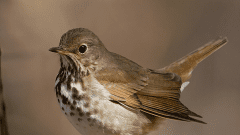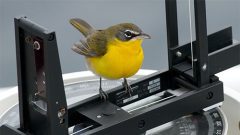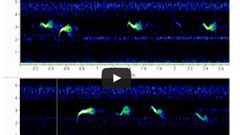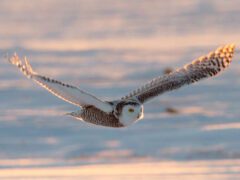The Four Keys to ID
- Size & Shape
A medium-sized, compact thrush with relatively short bill and long wings.
Relative Size
Slightly larger than an Eastern Bluebird, smaller than an American Robin.

 between sparrow and robin
between sparrow and robinMeasurements
- Both Sexes
- Length: 6.3-6.7 in (16-17 cm)
- Weight: 0.9-1.1 oz (26-30 g)
- Wingspan: 12.6-13.4 in (32-34 cm)
© Dick Dionne / Macaulay Library
- Color Pattern
Grayish brown above (warmer brown in Atlantic Canada), grayish below, especially on the flanks, with dark stippling or spotting on breast and sides of throat. The face pattern is plain compared to other thrushes, with grayish lores and a faint, incomplete eyering.
© Alec Napier / Macaulay Library - Behavior
Gray-cheeked Thrushes forage by consuming fruit in trees (or on the ground) and taking invertebrate prey on the ground with a quick peck. This small thrush tends to remain hidden, making it difficult to observe.
- Habitat
Breeds in willow-alder thickets and dense undergrowth in stands of spruce, balsam fir, other conifers, or cottonwood trees. Migrants and wintering birds occupy many habitat types, but tend toward well-developed understories and berry bushes.
© Donald Casavecchia / Macaulay Library
Regional Differences
Gray-cheeked Thrush has two subspecies. "Northern" Gray-cheeked (aliciae) occupies most of the species’ vast breeding range. The smaller "Newfoundland" Gray-cheeked (minimus) breeds only in Atlantic Canada and has warmer brown (rather than grayish) back and flanks, a more intense cream color below, and a more extensive and brighter yellow base to the mandible (the lower part of the bill).

















